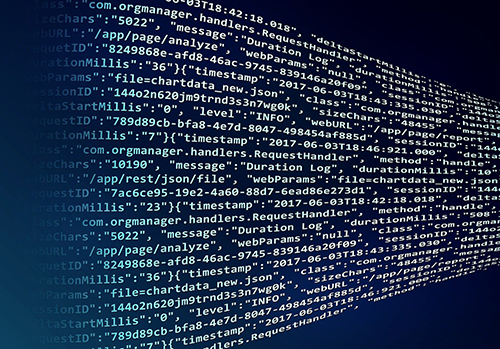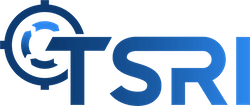Mainframes are big. Mainframes are powerful. Mainframes continue to run an enormous number of critical applications. Even as today’s enterprise infrastructures gravitate toward the cloud and newer languages, according to Allied Market Research, the market for mainframes will continue to grow through at least 2025 and legacy languages such as COBOL are still in wide use. The actual amount of processing performed by mainframes continues to grow steadily each year as a result of increasing demands, more users, and new applications reliant upon data stored on mainframes.
Modernize Now, Plan for the Future
 While the capacity and processing power of a mainframe remains attractive to enterprise companies and governments alike, there are drawbacks: when it comes to agility, mainframes cannot quickly adjust to the needs of a business. They cannot quickly scale to meet extraordinary events. It’s difficult to integrate business-intelligence tools for non-engineers to easily access the data they need. Mainframes often don’t have the automated security tools to mitigate a security breach before it causes extensive damage.
While the capacity and processing power of a mainframe remains attractive to enterprise companies and governments alike, there are drawbacks: when it comes to agility, mainframes cannot quickly adjust to the needs of a business. They cannot quickly scale to meet extraordinary events. It’s difficult to integrate business-intelligence tools for non-engineers to easily access the data they need. Mainframes often don’t have the automated security tools to mitigate a security breach before it causes extensive damage.
At the same time, as each year passes, more experts that can maintain the older, legacy languages like COBOL and PL/1 are retiring. In the wake of the Covid-19 pandemic, the availability of programmers reached crisis proportions when overtaxed unemployment systems in some U.S. states couldn’t keep up with demand. Most younger software engineers train and work in newer, evolving languages that support web technologies and the cloud.
Still, even as many of these enterprise organizations are strongly considering moving operations and processes to the cloud, such migrations can take years, and they may not abandon their mainframes entirely. But they still need the agility, access, and security of a modern system to remain competitive.
So, what can these organizations do? They can modernize.
A modernization effort is often targeted not only at the mainframe itself, but at older language programs that run these massive machines. These programs, often written in now-archaic languages without consideration for internet connectivity or cloud computing, often need to change to meet the organization’s current needs for accessibility, customer experience, and security compliance. These requirements are universal to modernization efforts of any kind, but not all forms of modernization are adept at meeting all the requirements. The modernization strategy your organization selects needs to consider the resources you have available, your timelines, and what your ideal outcome looks like.
Choosing a Modernization Strategy
Mainframe modernization does not have to mean eliminating the mainframe. Organizations can utilize a number of different modernization strategies that meet different demands at varying cost and risk levels. Some possibilities include:
- Gradual integration: On an as-needed basis, organizations can use automation to modernize older applications through incremental improvement and build new applications on the mainframe that fit into a state-of-the-art computing environment.
- Retire, Retain, Replace, Rehost or Re-envision: An organization will assess legacy applications and systems on an individual basis and decide what should be retained, what can be rewritten, and what should be replaced with a new, modern application that can be hosted in a new environment such as the cloud.
- Lift and shift: Rebuild current mainframe applications on a new platform, then integrate the with mainframe applications and data sources across platforms.
- Automated Transformation: A dedicated team assesses existing applications created in common languages such as COBOL or Fortran, or even less-common languages like PL/1 and MUMPS, then uses automated processes to translate the legacy application to the desired modern language (e.g., Java is a very common target). Organizations can then migrate to an upgraded mainframe or rehost them in the cloud. At the same time, a wider range of programmers can work with the modernized applications and more easily incorporate them into new databases and services.
Each approach varies depending upon business requirements, budget, and modernization schedule. Regardless, before beginning any process, an organization’s business and technical teams need to define their objectives and scope.
Gain Security & Competitive Advantage
Whether your organization is ready to move out of a mainframe environment or not, modernized code provides the security and peace of mind that your critical applications can be maintained and evolved as needed to support the business over time. As the Covid crisis and associated economic pressures have forced businesses of every size to accelerate modernizing their legacy systems, organization leaders have realized they can no longer wait to maintain their security and competitive advantage.
While some organizations may choose to do a wholesale migration, most companies and government agencies will opt to modernize using a more gradual approach. Either way – and whether an organization stays on their mainframe, moves to the cloud, or develops a hybrid solution – a modernization will ensure they can have the digital and human resources to sustain their operations far into the future.
-----
TSRI is Here for You
As a leading provider of software modernization services, TSRI enables technology readiness for the cloud and other modern architecture environments. We bring software applications into the future quickly, accurately, and efficiently with low risk and minimal business disruption, accomplishing in months what would otherwise take years.

